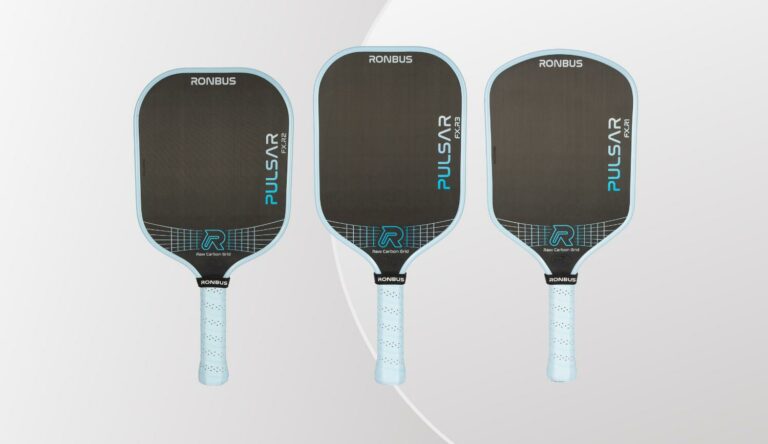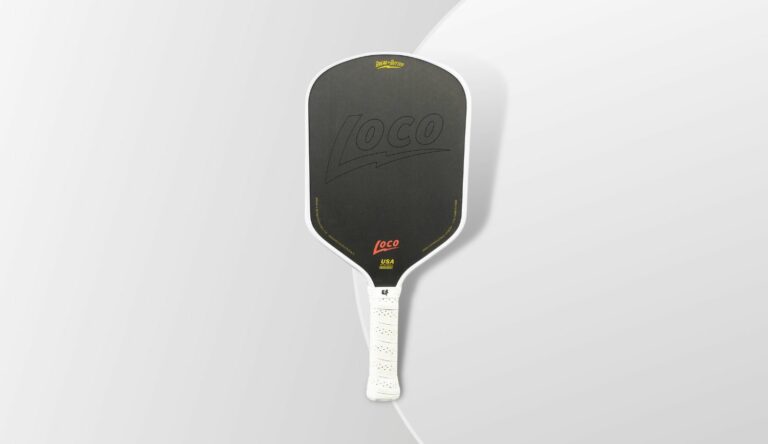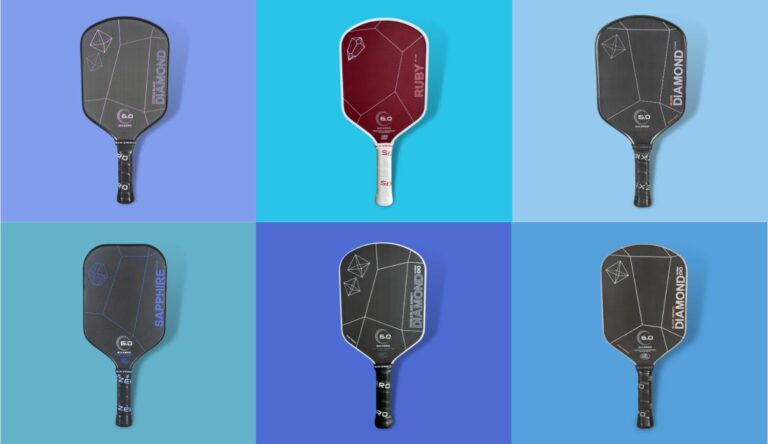Chances are that you’ll encounter at least one sandbagger if you play in pickleball tournaments.
You might have only heard about the concept, or you’ve had to deal with it directly. Perhaps you’ve been the sandbagger yourself.
Regardless of where you’re at with sandbagging, this post should help you fully understand that the who, what, and why of pickleball’s sandbagging dilemma.
Contents
What is Sandbagging?
Sandbagging is the practice of intentionally concealing or misrepresenting one’s skill-level in an effort to gain advantage over the competitive playing field.
The term is an old one, dating as far back as the 1580s. It meant to literally attack someone with a sandbag and was considered to be a dirty, ambushing attack. It eventually took on meaning around deception in sports and card games.
In pickleball, sandbagging often occurs when someone signs up in a lower bracket than their true skill-level in a tournament and dominates the bracket.
You also might see a sandbagger intentionally underperform and hold back their performance while sandbagging in order to continue to fly lower than their true skill-level in future tournaments.
For example, a sandbagging player or team could intentionally lose their first game in a double-elimination tournament to “improve” i.e weaken their seeding before entirely dominating their way to gold after their initial loss.
While considered unethical and unsportsmanlike, sandbagging is still rampant in the pickleball tournament space. It’s common to see people play down 1 or .5 of their true skill-level, say a 4.0 competing in 3.5 or 3.0 tournament. But sometimes you’ll see more extreme circumstances of 4.5+ players competing in the 3.0 division.
Is sandbagging always intentional?
In its truest sense, sandbagging is an intentional act. These are people that put winning over ethics and lack a genuine pride that would keep them playing at their true level.
While that happens all to often, there are many sandbagging-type situations that do arise without any ill-intention.
Here are some instances where unintentional sandbagging can happen:
1. Regional ranking discrepancies
Certain regions have stronger pools of players than others. For example, a 3.5 rated player from Florida, Arizona, or Utah could be a much stronger player than a 3.5 rated player rom another state that features a much less robust and active player pool.
2. Having a lack of knowledge of own rating
People that haven’t played in tournaments yet rarely know their true rating. It can take two to three tournaments before a newer player can figure out where they fall on the ratings scales.
It’s not uncommon for a newer pickleball player to excel in skill development before their first tournament, especially if they come from other racket sports. Because of this, you might see 4.0 skilled players entering at 3.0 in their first tournament.
3. Rating system issues and discrepancies
There are multiple rating systems that tournaments use, and some are better than others. DUPR ratings aren’t perfect, but they’re usually the most accurate reflections of a players true skill level. WPR and UTRP update far too slowly to accurately reflect many active players current levels.
It’s not uncommon for players to play drastically down in a tournament using their UTPR ratings due to this. Sometimes this is intentional, but other times people are not allowed to play up above their rating, so their outdated ratings often force them to play in a less competitive bracket.
What’s the popular opinion of sandbagging in pickleball?
As with most things, opinions vary widely.
In general, most people have scorn for players that clearly abuse the rules to play against weaker competition.
But there’s usually more leniency for people who make mistakes when entering tournaments due to ignorance or caution. Some players have to travel far for tournaments and don’t want to enter a tournament at a level that results in them being beat out after two matches and having to quit early in the tournament.
Some players will also enter a tournament slightly below their overall skill level due to concern that their performance will be weaker due to concerns of the pressure of competitive play.
These examples are legitimate concerns, which sometimes bear out successfully, and other-times end up with the team crushing the competition unexpectedly.
It’s a hard thing to get right, and as a result, most people give players the benefit of the doubt in a lopsided circumstance.
But on the other side, if a player has won multiple 4.0 or 4.5 tournaments and enters a tournament at a 3.0 level for no good reason other than to dominate and get on the podium… then yeah, a lot of players might feel enraged.
The first time I saw sandbagging was when a player that regularly played with 4.0s entered a 2.5 beginners tournament and easily swept the field to take gold. That felt like very dirty tactics.
A good rule of thumb is to play at a level that you feel you have to compete to win at. You don’t necessarily want to be the strongest player in the room if you have a truly competitive growth mindset. You want to feel like you overcame the odds to earn the trophy.
Tips to avoid being sandbagged
There’s no easy answer here to entirely avoid sandbaggers coming for you. But there are some strategies you can use.
1. Enter sanctioned tournaments over unsanctioned tournaments
Unsanctioned tournaments are often a free-for-all ratings wise, which makes them ripe for exploitation by sandbaggers. Unsanctioned tournaments don’t require participants to enter based on their official ratings, and don’t report back results to the official rating entities, so sandbaggers can keep entering at what level they choose.
In sanctioned tournaments, its much harder to sandbag because once you win a couple tournaments, your rating goes up and you will no longer be allowed to enter lower-skilled brackets. Entrants cannot register for lower ratings than they’re at, regardless of what heir partner is rated at.
This doesn’t mean that you won’t encounter sandbaggers in sanctioned tournaments, but it means that they won’t be able to get away with it for long before their ratings get pushed up.
2. Inform tournament organizers of sandbagging players
One strategy that could potentially keep an incoming sandbagger from squaring up against you is to work to actively undermine their efforts to dominate the tournmanet.
You can do this by:
- Ensuring that they are indeed sandbagging by researching their ratings online.
- Alerting the tournament director about the individual.
While a lot of tournament organizers do try to combat sandbagging, a lot of this behavior can slip through the cracks unnoticed.
By bringing to their attention that this player has a higher DURP rating or has won multiple tournaments at a higher level, they might move the player to the correct division based on their actual capabilities.
Can sandbagging be stopped?
Sandbagging in pickleball cannot be entirely stopped. Even more established sports like tennis have failed to contain it.
With new players learning the game all the time, many of them coming from previous racket sports and ascending in skill at a rapid pace, it becomes literally impossible to police skill entrant discrepancies.
The market also supports unsanctioned tournaments, as players are more than willing to sign up for them, even with the issue of sandbagging.
The best strategy to combat sandbagging in sanctioned events is for tournaments to switch to the DUPR rating system. With DUPR, even if you lose to a sandbagger, your rating won’t take a hit, and could even improve.
UTPR tournaments actually influence more sandbagging sometimes because most players have a lower UTPR rating than what they’re true level is. This is because the ratings change so infrequently and struggle to keep up with player skill change.
One silver lining, for some players at least, is that when you get to 5.0+ there’s much less sandbagging going on.
What are your thoughts on sandbagging in pickleball?
Do you hate or easily tolerate sandbagging? Do you mind players that have a high DUPR riding their low UTPR rating into weaker competition? Or players entering unsanctioned tournaments to just get some wins on lower competition?
Let us know your thoughts (or potential solutions) in the comments below.
If you’d like to keep reading about improving your pickleball game, check out these posts on the third shot drop, the third shot drive, and the best paddles for intermediate players.






